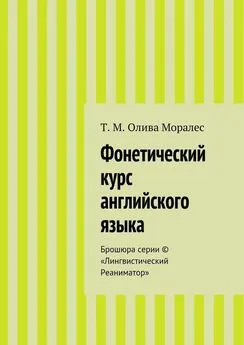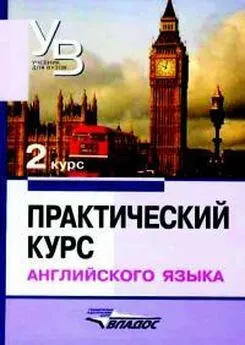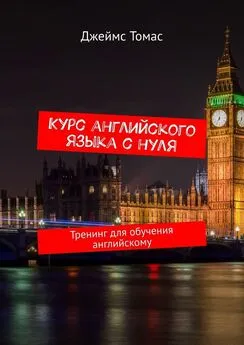Владимир Аракин - Практический курс английского языка 3 курс [calibre 2.43.0]
- Название:Практический курс английского языка 3 курс [calibre 2.43.0]
- Автор:
- Жанр:
- Издательство:ВЛАДОС
- Год:2006
- ISBN:нет данных
- Рейтинг:
- Избранное:Добавить в избранное
-
Отзывы:
-
Ваша оценка:
Владимир Аракин - Практический курс английского языка 3 курс [calibre 2.43.0] краткое содержание
I - V курсов педагогических вузов.
Цель учебника – обучение устной речи на основе развития необходимых автоматизированных речевых навыков, развитие техники чтения, а также навыков письменной речи.
Практический курс английского языка 3 курс [calibre 2.43.0] - читать онлайн бесплатно полную версию (весь текст целиком)
Интервал:
Закладка:
1. Cinema:cinema (house), open-air theatre, cinema with continuous performance, drive-in-theatre, film, movie, (motion) pic-
ture, to go to the cinema (a movie, movies, pictures), normal screen, wide (large, broad) screen, the first (second) showing, entrance
(exit), showing (performance, programme) begins at ... (ends at...), colour poster, the box office, to book tickets.
2. Films:documentary, educational, popular scientific (or science) film, feature film, science fiction film, animated cartoon, ad-
venture film, musical, puppet film, thriller, comedy, horror film, crime film, Western, children's film, theatrical film, wide-screen,
colour (black-and-white, mute, sound, dubbed, full-length, short- length) film, short, two (three) part film, wartime epic newsreel,
serial, "X" film,1 star-studded film, the screen version (adaptation) of the novel.
3. Parts of films:scene, outdoor (indoor) scene, the opening scene, the final scene, crowd scene, an episode, still, shot, long shot,
close-up, caption, subtitle, flash-back(s).
4. Cinema work:to shoot (produce, make) a film, to make a screen version (adaptation) of a novel, to screen a novel (play,
story), to adapt a novel for the screen, to film a novel, to.play (act) on the screen, to release a picture, to come out (about a film), to go
into production, to remake a film, to reissue a film, to be dubbed in Russian, to present a film in Russian, co-production (joint pro-
duction), directed b y. . . , scenery and costumes by ... , the songs set to music by ... .
5. Cinema workers:producer, film director, art director, cam- era-man, script-writer, animator, costume designer.
6. Cinema-goers:film goers, audience, film fans, to watch the film (screen), to watch smb. acting on the screen, to see a film.
7. Actors and acting:the cast, comedian, an actor of great promise, leading actor, star, to play the main (leading, title, key) or
small (supporting, minor) role, to co-star, to portray a character, to give a convincing (memorable, captivating, warm, brilliant, su -
perb) portrayal of ... , to give a magnificent performance as ... (in), to take (gain) the best actress (actor) award (title), to create a true-
to-life image, to make the most of the role, to bring to life on the screen, to come alive on the screen, a typical N role, to outshine
everybody else, a new N film, to star in a role, to be miscast (ill-chosen), to be cast to advantage.
8. Effect. Impression:the film deals with (depicts, presents, tells of); the message of the film; to win universal acclaim; to praise
unreservedly; to leave a deep and lasting impression on; to appeal so much to the audience; to be (make) a hit with the public; a
delightful, amusing comedy; entertaining (powerful, gripping, absorbing, vividly dramatic, technically brilliant, sad, depressing,
slow-mov- ing, dragged-out) film; to mar a film; to leave smb. cold; empty of serious content; a flop; a good film, not without flaws;
a run-of-the- mill film; not a film to everyone's taste; not an easy film to watch; obscure and complex ideas.
1. Read the text for obtaining its information:
No other art form has had quite the impact on our lives that the motion pictures have. Indeed, the movies are truly an art of our
time — they were born and have come of age in the twentieth century, and they now demand the serious consideration given to the
other arts. Everybody loves a story. Children mesmerized for hours before a television set watching cartoons they are seeing for the
fifth or sixth time, or long lines of shivering movie-goers outside a theater2on a winter night, convincingly demonstrate that truth.
And today the love of story, as these examples suggest, is requited much more often than not with a narrative told in visual images.
There can be no question about the supremacy of the visual image in the realm of story. The fact chat images and movies have
many uses besides story-telling simply adds gratuitous evidence in support of the observation that the life of the mind today receives
its nourishment primarily from visual, rather than verbal sources.
Clearly, in terms of sheer quantity, visual narrative is the greatest aesthetic and educational force in the world today, and the
movies, the visual narrative media — qualify unchallenged as the art of our time.
No one has ever seriously doubted that the movies are a powerful force in contemporary life. Quite the contrary. Their potential
for propaganda purposes was immediately recognized and in some cases exploited. What has been questioned is the capacity of the
movies for doing good. Youthful and perhaps too much a work horse in the cultural market-place, they have been vulnerable to the
charge that they are unable to awaken and refresh the mind, that they cannot tap the deepest reaches of man's spiritual life and so,
incapable of articulating anything of consequence, are at best a rudimentary art.
Yet the movies are not now as disturbing for intellectuals as they once were. One reason, no doubt, is that they are no longer, at
least in the United States, the popular art; television has stolen the limelight.
""At present suspended somewhere between the hell of mass culture and the heaven of high art, the movies are undergoing aesthetic
purification.
Much remains to be accomplished, however. Since we have to live with the movies, we would prefer not to be embarrassed by
them; we want the chance to exercise our humanity in and through the movies, and so we persist in demanding that the movies make
more room for man within their aesthetic boundaries.
We would not, by any means take the fun off movies in order to fit them into the traditional earnestness associated with
education ... but the aim is, and should be a higher hedonism which more profoundly entertains the heart and mind. With the existing
film classics and the fifteen to twenty a year from around the world capable of captivating attention — there are enough good and
great movies for us to grow by. The movies arouse the mind and eoul when given undivided attention.
2. Answer the following questions:
1. The extract is written by an American critic. Can you find evidence of this in the text? 2. Why do you think movies are regarded
as "truly an art of our time"? 3. What facts given in the extract prove the idea that nowadays people prefer a narrative told in visu al
images? Do you agree with this opinion? Support whatever you say. 4. How can movies be helpful for people besides relating stories?
Which of the spheres do you consider most significant? Give your reasons. 5. Why do you think movies possess the greatest aesthetic
and educational force? 6. How can you account for the fact that the capacity of the movies for doing good has been ques tioned? 7.
Why in your opinion do some people regard movies as a rudimentary art? 8. Would you agree that cinema can be regarded as the
popular art, that it belongs to mass culture? What do you know about this art? 9. What kind of entertainment is nowadays rivalling
cinema? Why? 10. What is the place of cinema, as the author sees it, among the other arts? Do you agree with him? 11. Do you think
1 Oil and water will never mix. 2. Suspicion always haunts the guilty mind. 3. Familiarity breeds contempt. 4. It's not the gay coat
that makes the gentleman.
2 The spelling theateris common in the American variant of the English language.
movies should be all f u n or rather a thought-provoking and earnest art? 12. What is the main aim of the movies as the au thor sees it?
The only word he uses to denote this art is movies. What synonymous expression would a British critic use? What other synonyms to
this word do you know?
3. a) Find in the text the arguments the author gives to illustrate the following:
1. cinema— a wide-spread art and entertainment of the 20th century; 2. its impact on people's lives; 3. cinema and story-telling;
4.cinema and education; 5. cinema — an earnest, thought-provok- ing or rudimentary art; 6. the place of cinema among the other
arts, its main aim.
Try and preserve the wording of the original. Add your arguments as well.
b) Summarize the text in four paragraphs specifying the role of the cinema in our lives.
4. Use the Topical Vocabulary in answering the questions:
1. What does a usual cinema showing consist o f ? 2. How often do you go to the pictures and where do you prefer to sit? 3. What
types of films do you know? 4. What films appeal to you most?
5. Do you care for long films? 6. What is a film star? What does the success of a film depend on? 8. Which is more important — the
story, the acting, the directing or ishe camera-work? 9. What do we mean when we say that a film has\a message to convey? 10. Why
does a director trying to interpret a great work of literature on the screen take upon himself a most responsible task? 11. How is the
cinema used as an aid in teaching? 12. What do you know about international film festivals? How often are Moscow Film Festivals
held? What is their motto?
5.Give a review of a film you have recently seen and liked (disliked). Use the Topical Vocabulary. Remember: A review should guide and inform. A
mere telling of the story is not a review.
Outline for Motion Picture Review
1.
Type of film:feature film, comedy, black-and-white, short, etc.
2. Production:What studio released the film? Was it co-production? Was the film dubbed?
3. Story (plot):Is it by a well-known author? Is the story original? True to life? What is the climax of the story? Is the ending
logical?
4. Direction:Who directed the film? Was the introduction of characters and scenes skilful? Are useless scenes included?
5. Photography:Is it artistically done? Are there good shots? Are close-ups used effectively?
6. Acting:Name the leading characters. Are there any stars? Any outstanding performances of minor roles? True-to-life inter-
pretation of characters?
7. Sound effects:Does speaking or acting predominate? Does the dialogue seem real? Do actors speak effectively? Are charac -
teristic noises employed? Is the music suitable?
8. Critics:What do critics say about the picture? Are their opinions sound? Do you share their points of view?
9. General impression and conclusion:The impression the film made on you. How was the effect achieved? Do you think this
film is worth seeing?
6. You are asked to tell a group of English students about the best children's film produced by Russian studios. Which film would you choose?
(Describe the film in about fifty words. Use the Topical Vocabulary, Outline for Motion Picture Review of Ex. 5. and conversational formulas for
giving opinion. See«Appendix.)
7. Work in pairs. Discuss the films you have recently seen. One of the stu dents is supposed to speak about a film he liked, the other about a
different film which he disliked. Try and interrupt each other with questions to get some more information about the film you have not seen. Use
Читать дальшеИнтервал:
Закладка:
![Обложка книги Владимир Аракин - Практический курс английского языка 3 курс [calibre 2.43.0]](/books/1072035/vladimir-arakin-prakticheskij-kurs-anglijskogo-yazyk.webp)









